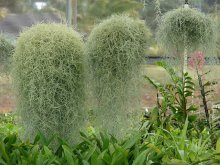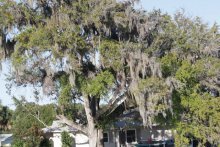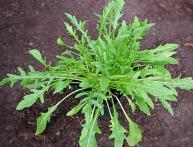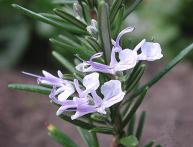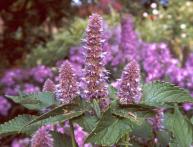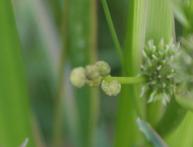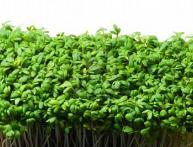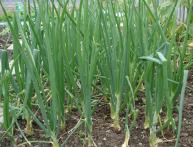Angel hair, old man's beard, Spanish moss or Tillandsia usneiformes
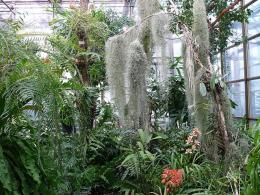
The plant Tillandsia usneiformes is a typical inhabitant of the humid forests of South America. Its popular name is Spanish moss. It is worth explaining separately why it is moss and why it is Spanish.
Content:
Botanical characteristics of the plant
Tillandsia usneiformes is a flowering plant of the Bromeliad family. The roots of the plant are attached to the bark of trees, but do not feed on its juices, like parasitic plants, but receive water from the surrounding humid tropical air. The plant has thin stems, gray-green or gray-blue, 20 - 30 cm high. Dying stems can exceed three to four meters in length, they hang down in a bizarre “beard”.
The indigenous Indians of South America, when they first saw the bearded faces of Spanish sailors, compared their beards to this plant. And they began to call it moss because of its external resemblance to usney moss. Tillandsia - in honor of the botanist E. Tillands, who described the plant in the 17th century. That's what they started calling it flowering plant Tillandsia moss or Spanish moss. And also the hair of an angel and the beard of an old man are also Spanish moss. The plant blooms with small flowers, the fruit has a capsule, the seeds are very small.
The plant is perfectly adapted to receiving moisture from the air, rather than from the soil.The entire stem has peculiar outgrowths - scales, which trap both dew and rain moisture.
Tillandsia usniformes reproduces both by seeds and vegetatively.
Pieces of the stem and seeds are captured by wind and rainwater and carried from tree to tree. Spanish moss especially likes oaks and cypresses, but it can even settle on an electric pole. Many species are listed in the Red Book.
Spanish moss in the home interior
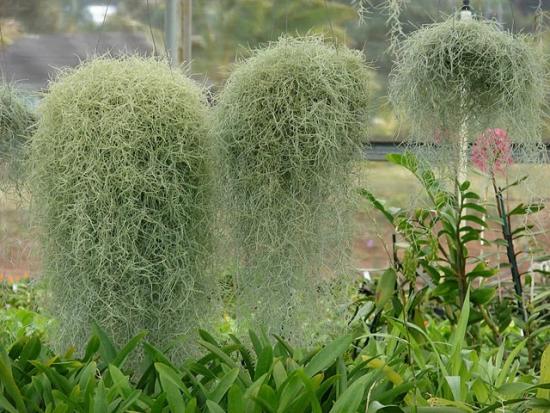
By using indoor flowers you can create original design compositions in which a variety of plants will be used. Currently popular:
- epiphytic trunks
- showcases
- screens
All these compositions cannot do without tillandsia. For an epiphytic trunk, a part of the real trunk of the following trees is suitable:
- oak
- acacia
- and you
- plums
- pears
By planting special plants on the trunk, you can get a corner of the exotic tropics in your home interior. The base of the trunk must be secured in a fairly solid container using a cement mixture.
Pots with plants - vines, which grow intensively upward and curl around the trunk - are placed in the same container. You can put it between the vines bowls with tradescantia, which will act as a ground cover plant. Spanish moss can be “settled” on the branches of the trunk. To do this, wrap the roots of the plant with pieces of moss, carefully secure it with thin wire and place the entire plant on the branches.
Tillandsias with gray-blue leaves will look most impressive on an epiphytic trunk:
- Tillandsia "Medusa's Head" - the leaves of the plant are intricately curved, the ends curl.All this resembles the head of a fabulous jellyfish - the Gorgon. The leaves are gray in color, the flowers are blue.
- Air-flowering Tillandsia (aeranthos), triangular, gray leaves. When there is a lack of moisture, they begin to curl. Blooms once a year, red flowers.
- Tillandsia blue can be placed on a north window. When all other species require intense and long-lasting sunlight, it tolerates shade quite well.
It should be said that when grown on a trunk, Spanish moss requires constant moisturizing and spraying, you can even take it off and bathe it once a week. If indoor air is dry in winter or hot weather in summer, the number of sprays should be increased. Under no circumstances should the air be allowed to become excessively dry.
In the summer, Spanish moss can be taken out to the loggia or to the greenhouse in the summer cottage.
Showcases are another way to decorate the interior with indoor flowers. It consists of placing flowers inside a glass container built into the window. A tray with decorative stones or pebbles is inserted into it. The size of the display case can be either the entire window or quite modest.
Tillandsia usneiformes and erecta are ideal for display decoration. Tillandsia erecta has very large, up to 5 cm, bright blue flowers; in addition, it is the most unpretentious to care for; after it blooms, it will produce “babies” that will quickly fill the volume of the display case.
Basic care requirements
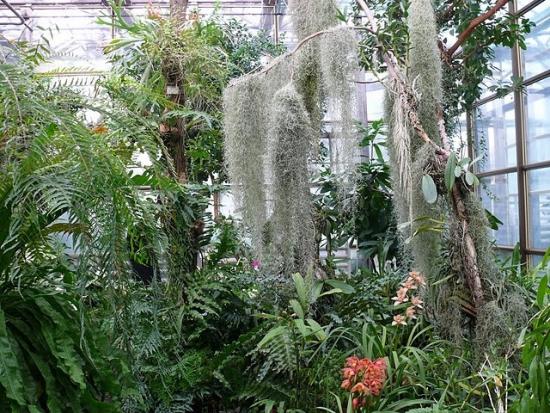
To successfully grow tillandsia at home, you need to create conditions similar to those of a tropical forest. In winter, reduce the number of waterings, since in the plant’s homeland there is a dry winter period at this time. From state of winter dormancy the plant is bred by abundant watering and spraying, which will imitate a tropical summer downpour. It is also advisable to provide shade in the summer, since it is at this time that all plants grow in the tropics.
Spanish moss can be propagated by planting new side shoots or sowing ripened seeds into the substrate. Generally there are no problems with growing this plant, but it is important to monitor the health of Spanish moss as it is susceptible to fungal diseases and aphid damage. Otherwise, it is a wonderful home decoration.
What Tillandsia looks like, look at the video:
Interesting information about the vegetable garden

